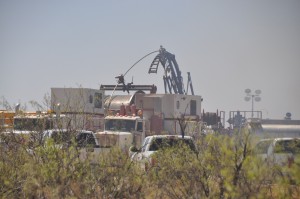The world’s petroleum supplies could increase six-fold in the coming years to 10.2 trillion BBLS, according to a report by market research firm Lux Research.
Hydraulic fracturing, or fracking, is the most common new technique, in which chemical-laced water is injected to break up subterranean rock formations to extract oil and natural gas. There are a host of exotic so-called Enhanced Oil recovery (EOR) technologies detailed in the report. The technologies – from solar-powered steam injection to microorganisms – can be used to extend the life of old oil fields and gain access to unconventional petroleum reserves like oil sands.
 If EOR technologies had not come online, the projected oil prices of $300 BBL during the peak oil hysteria, might have occurred. Instead, unconventional reserves – which vastly exceed conventional ones – have become accessible. However, the development of such technologies is predicated on oil prices of at least $100 BBL to offset the costs and induce a conservative industry to invest in and deploy new methods.
If EOR technologies had not come online, the projected oil prices of $300 BBL during the peak oil hysteria, might have occurred. Instead, unconventional reserves – which vastly exceed conventional ones – have become accessible. However, the development of such technologies is predicated on oil prices of at least $100 BBL to offset the costs and induce a conservative industry to invest in and deploy new methods.
Thermal intervention injects steam into wells to extract heavy oils or oil sands. It takes a lot of energy to generate the steam, so some companies are using solar energy instead of fossil fuels. Solar fields built by BrightSource Energy and GlassPoint Solar have been deployed by Chevron at old oil fields in California to help recover heavy petroleum.
Chemical EOR injects polymers and alkaline compounds into oil fields to help loosen oil from rock formations and push it into production wells. The leader in this method is the China National Petroleum Corporation, which is betting it will be 20% more efficient than flooding wells with water to bring oil to the surface. In the U.S. there may be opposition to introducing large volumes of chemicals underground near water supplies. Also, Chemical EOR does not work well in oil reservoirs where temperatures are high and there’s a lot of salt and sulfur.
Microbial EOR uses environmentally benign microorganisms to break down heavier oils and produce methane, which can be pumped into wells to push out lighter oil. Originally introduced in the 1950’s, it has only recently been put to limited use. In Malaysia, an experiment with microbial EOR increased oil production by 47% over five months.

